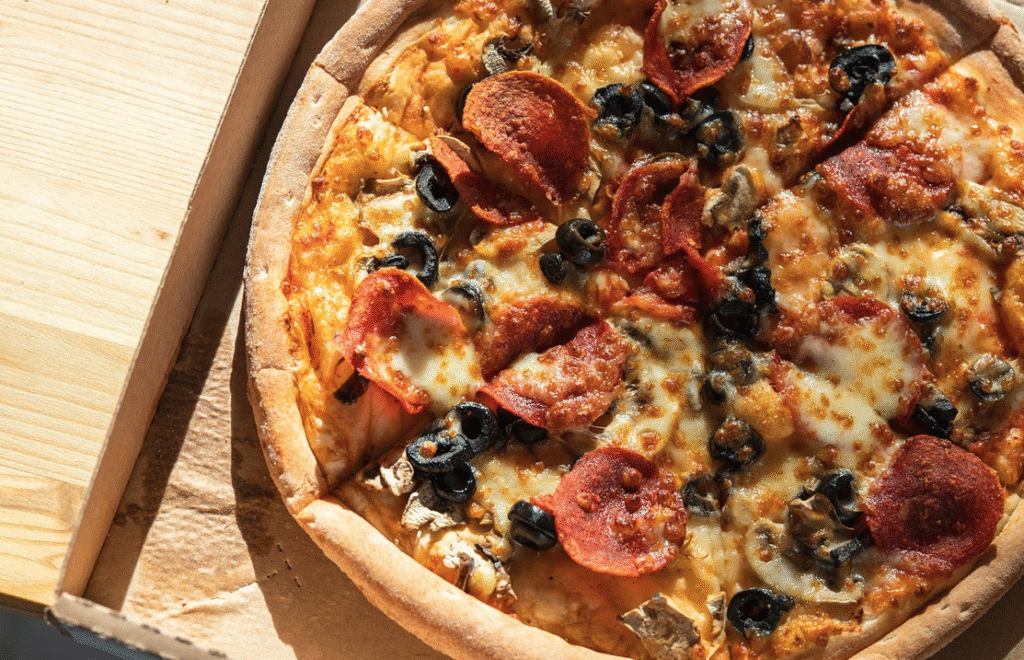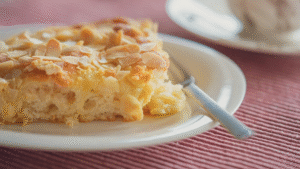Pizza is one of the world’s most beloved foods a perfect union of crust, sauce, cheese, and toppings. But while many focus on the toppings, real pizza enthusiasts know that a great pizza starts from the bottom up — with the dough.
Mastering pizza dough allows you to create pizza that’s not only better than takeout, but completely tailored to your preferences. From chewy Neapolitan-style crusts to gluten-free alternatives, this comprehensive guide will show you how to make pizza dough your way with full control over flavor, texture, and nutrition.
Why Homemade Pizza Dough Is the Best Foundation
Homemade pizza dough isn’t just about saving money it’s about unlocking creativity and craftsmanship. Store-bought options often contain additives, preservatives, and dough conditioners. Making it yourself means using fresh ingredients and achieving the taste and texture that suits your style.
Key Advantages of Making Pizza Dough from Scratch:
- Control Over Ingredients – Choose organic flour, filtered water, or low-sodium options
- Better Flavor – Slow fermentation develops deeper, richer taste profiles
- Custom Textures – Adjust hydration for thin, airy, or dense crusts
- Dietary Flexibility – Easily create gluten-free, whole grain, or low-carb alternatives
- Cost Efficiency – Make multiple pizzas at home for a fraction of restaurant prices
Essential Ingredients for Classic Pizza Dough
Though variations abound, most pizza dough begins with four simple ingredients. Quality matters — especially in flour and yeast — to produce dough that’s smooth, elastic, and flavorful.
Core Ingredients:
- Flour: Bread flour gives structure; all-purpose works well too.
- Yeast: Active dry or instant yeast to initiate fermentation.
- Water: Lukewarm (around 110°F / 43°C) to activate yeast.
- Salt: Adds structure and balances flavor.
- Olive Oil (optional): Adds elasticity and flavor.
- Sugar (optional): Feeds yeast and enhances browning.
Classic Pizza Dough Recipe (2 Medium Crusts)
Ingredients:
- 3 ½ cups bread flour (or all-purpose)
- 1 packet (2 ¼ tsp) active dry yeast
- 1 ¼ cups warm water
- 1 tsp salt
- 1 tbsp olive oil
- 1 tsp sugar (optional)
Instructions:
- Activate Yeast: Combine warm water, sugar, and yeast. Let sit for 10 minutes until bubbly.
- Mix Dough: In a large bowl, combine flour and salt. Add yeast mixture and olive oil. Mix to form a shaggy dough.
- Knead: On a floured surface, knead for 8–10 minutes until smooth and elastic.
- First Rise: Transfer to an oiled bowl. Cover and let rise in a warm area for 1–1.5 hours or until doubled.
- Divide & Rest: Punch down dough. Divide into two equal balls. Rest 15 minutes before shaping.
- Shape & Bake: Stretch into rounds. Preheat oven to 475°F (245°C). Bake with toppings for 12–15 minutes.
Custom Pizza Dough Variations – Make It Your Way
Here’s how to go beyond the basics and create dough that suits your lifestyle, taste preferences, and health goals.
1. Thin Crust Pizza Dough
- Lower hydration for a crispier texture
- Roll thinner with a rolling pin or stretch by hand
- Bake at 500°F (260°C) on a hot pizza stone
Perfect for: Flatbread-style pizzas or quick weekday dinners
2. Thick Pan Pizza Dough
- Higher hydration (use slightly more water)
- Proof in a cast iron skillet or deep pan for fluffiness
- Brush crust with olive oil before baking for golden color
Perfect for: Detroit-style, Sicilian, or deep-dish pizzas
3. Sourdough Pizza Dough
- Replace yeast with ½ cup active sourdough starter
- Let ferment in the fridge for 12–24 hours for tangy flavor
- Chewier crust and excellent blistering when baked hot
Great for: Artisan-style pizzas with complex flavor
4. Gluten-Free Pizza Dough
- Use gluten-free flour blend with xanthan gum
- No need to knead — just mix and let rest
- Par-bake before adding toppings for better structure
Great for: Those with gluten intolerance or celiac disease
5. Whole Wheat Pizza Dough
- Mix 50% whole wheat flour with 50% all-purpose
- Add extra olive oil or honey to maintain softness
- Let rise longer — whole wheat absorbs more water
Perfect for: Health-conscious home cooks wanting fiber-rich crusts
6. No-Yeast Pizza Dough
- Use 2 tsp baking powder instead of yeast
- Quick mix and roll; no rise time required
- Texture is closer to a biscuit or flatbread
Great for: Emergency pizza nights or same-day meals
7. Keto or Low-Carb Cauliflower Crust
- Made from cooked cauliflower, cheese, egg, and seasoning
- Press onto a baking tray and pre-bake before topping
- Not traditional dough, but excellent for carb control
Perfect for: Low-carb or gluten-free lifestyles

Tools to Elevate Your Homemade Pizza
- Pizza Stone or Steel: Retains high heat and crisps bottom crust
- Pizza Peel: Easily transfer dough to hot oven surface
- Digital Scale: Precise measurements for better results
- Bench Scraper: Cleanly cut dough or shape rounds
- Dough Proofing Box: Keeps dough moist and warm
Tips for Better Dough Every Time
- Don’t rush the rise: Cold fermentation in the fridge (12–72 hours) improves texture and flavor
- Use a higher-hydration dough for airier crusts (70–75% water to flour ratio)
- Let shaped dough rest 10–20 minutes before baking for easier stretching
- Dust peel with semolina or cornmeal to prevent sticking
- Finish with olive oil or garlic butter after baking for flavor boost
Pizza Dough Troubleshooting Table
| Issue | Likely Cause | Solution |
|---|---|---|
| Dough not rising | Inactive yeast or cold conditions | Use fresh yeast and a warm proofing spot |
| Dough too sticky | Too much moisture or high humidity | Add flour 1 tbsp at a time |
| Crust too hard | Over-baking or too little fat | Bake less, brush edges with olive oil |
| Dough won’t stretch | Not enough rest after kneading | Let it relax at room temperature |
| Pale crust | Oven not hot enough | Preheat longer; bake at 475°F+ |
Faqs
1. What are the essential ingredients for homemade pizza dough?
At its core, all pizza dough needs:
- Flour (preferably bread flour or 00 flour for better gluten structure)
- Water (lukewarm for yeast activation)
- Yeast (active dry or instant)
- Salt (for flavor and gluten control)
- Olive oil (optional for added tenderness)
This simple base can be tweaked for flavor, texture, and rise preferences.
2. How do I choose between thin crust, thick crust, or Neapolitan-style dough?
It comes down to hydration levels, flour type, and proofing time:
- Thin crust: Less water, rolled thin, short proofing
- Thick crust: Higher hydration, longer rise for fluffiness
- Neapolitan: High-gluten 00 flour, 65% hydration, slow cold fermentation, blistered in a very hot oven
Experimenting with ratios and rise time lets you craft the crust to your liking.
3. What’s the best way to make pizza dough gluten-free or whole grain?
For gluten-free: Use a blend of rice flour, tapioca starch, and xanthan gum. Look for specific GF pizza flour mixes for convenience.
For whole grain: Substitute 50% of the white flour with whole wheat. You may need to add more water and let it rest longer to soften the dough.
A splash of honey or olive oil helps balance whole grain bitterness.
4. How long should I let pizza dough rise?
A standard rise takes 1–2 hours at room temperature until the dough doubles in size. For deeper flavor and better texture, try a slow fermentation in the fridge for 24–72 hours. This cold proofing enhances chewiness and adds a slight tang, similar to artisan breads.
5. Can I freeze pizza dough for later use?
Yes! After the first rise, portion the dough into balls, lightly coat them in oil, and freeze in airtight bags. To use:
- Thaw overnight in the fridge or 3–4 hours at room temp
- Let rest 30 minutes before shaping
Frozen dough can be stored for up to 3 months without losing quality.



